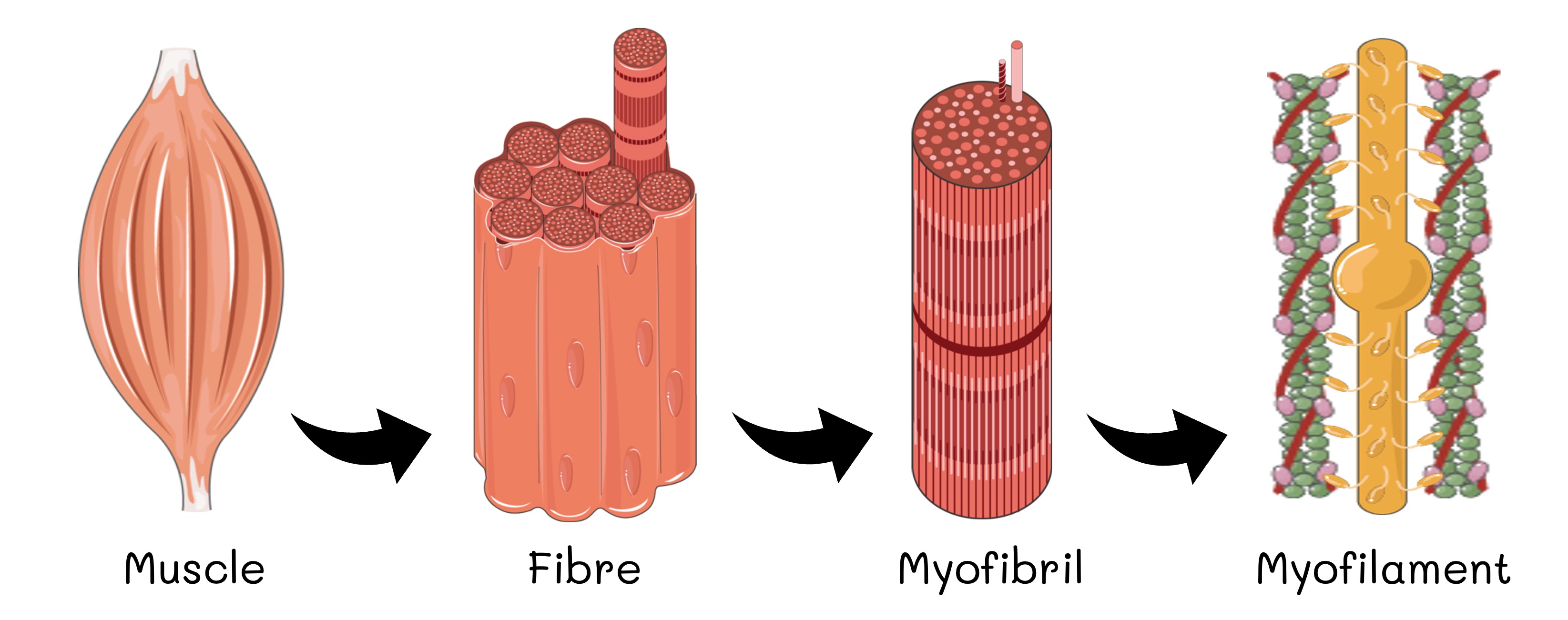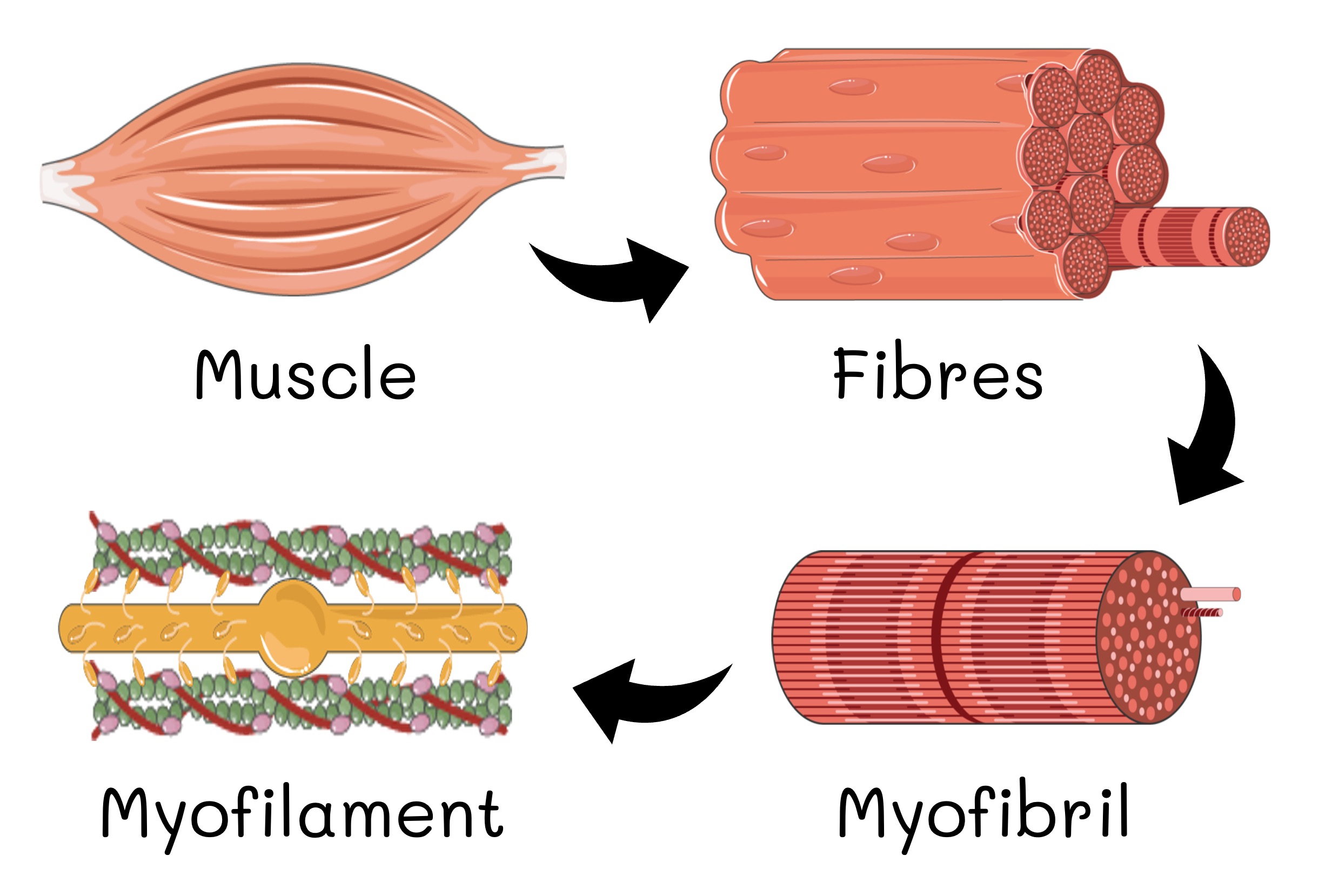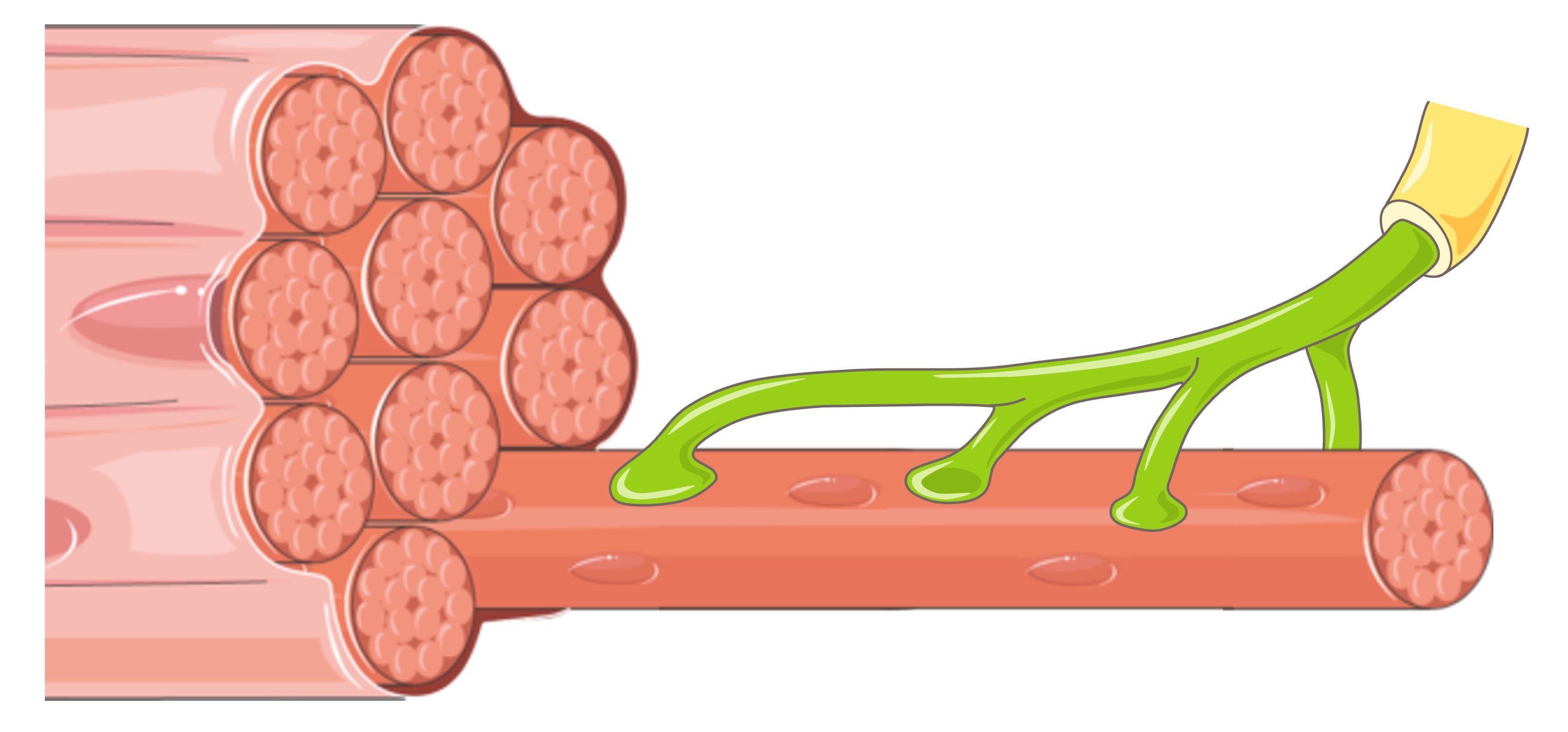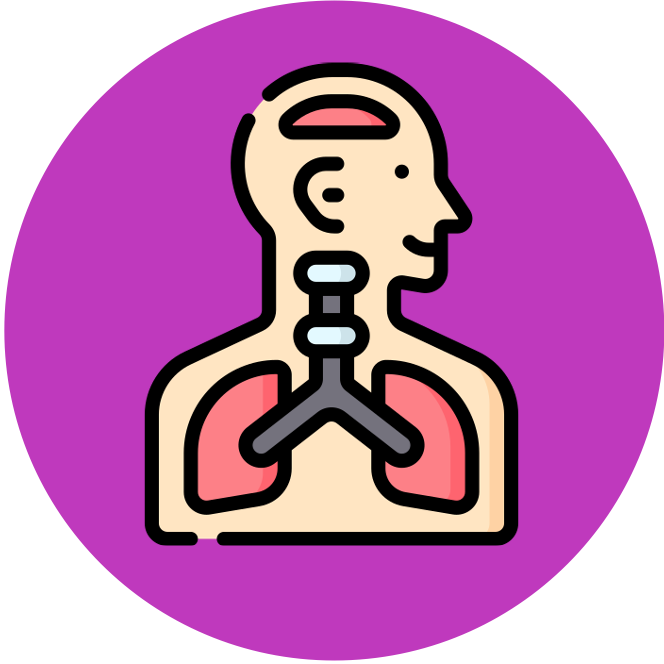

Motor Units
Skeletal Muscle
Skeletal muscles consist of tightly packaged muscular bundles (fascicles) surrounded by connective tissue
-
Each bundle contains multiple muscle fibres, which are formed when individual muscle cells fuse together
-
Muscle fibres are multinucleated and have many mitochondria (for ATP production)
-
The muscle fibres in a bundle are collectively surrounded by a membrane called the sarcolemma
-
-
Muscle fibres contain long structures called myofibrils that run the length of the fibre and are responsible for muscular contraction
-
The myofibrils are surrounded by a membranous network called the sarcoplasmic reticulum
-
-
The myofibrils are composed of protein myofilaments and can be divided into repeating sections called sarcomeres
-
Each sarcomere represents a single contractile unit of a muscle fibre
-
Skeletal Muscle Organisation


Motor Units
Skeletal muscles are innervated by motor neurons, with each neuron connecting to multiple muscle fibres via branching axon terminals
-
Neurons cause skeletal muscles to contract by releasing neurotransmitters (acetylcholine) into the neuromuscular junction
A motor unit represents a single motor neuron along with all the muscle fibres it stimulates
-
The number of motor units activated will determine the intensity of the muscle contraction
-
Low intensity muscle contractions activate a low number of muscle units, while high intensity contractions activate more motor units
Motor Unit Structure






